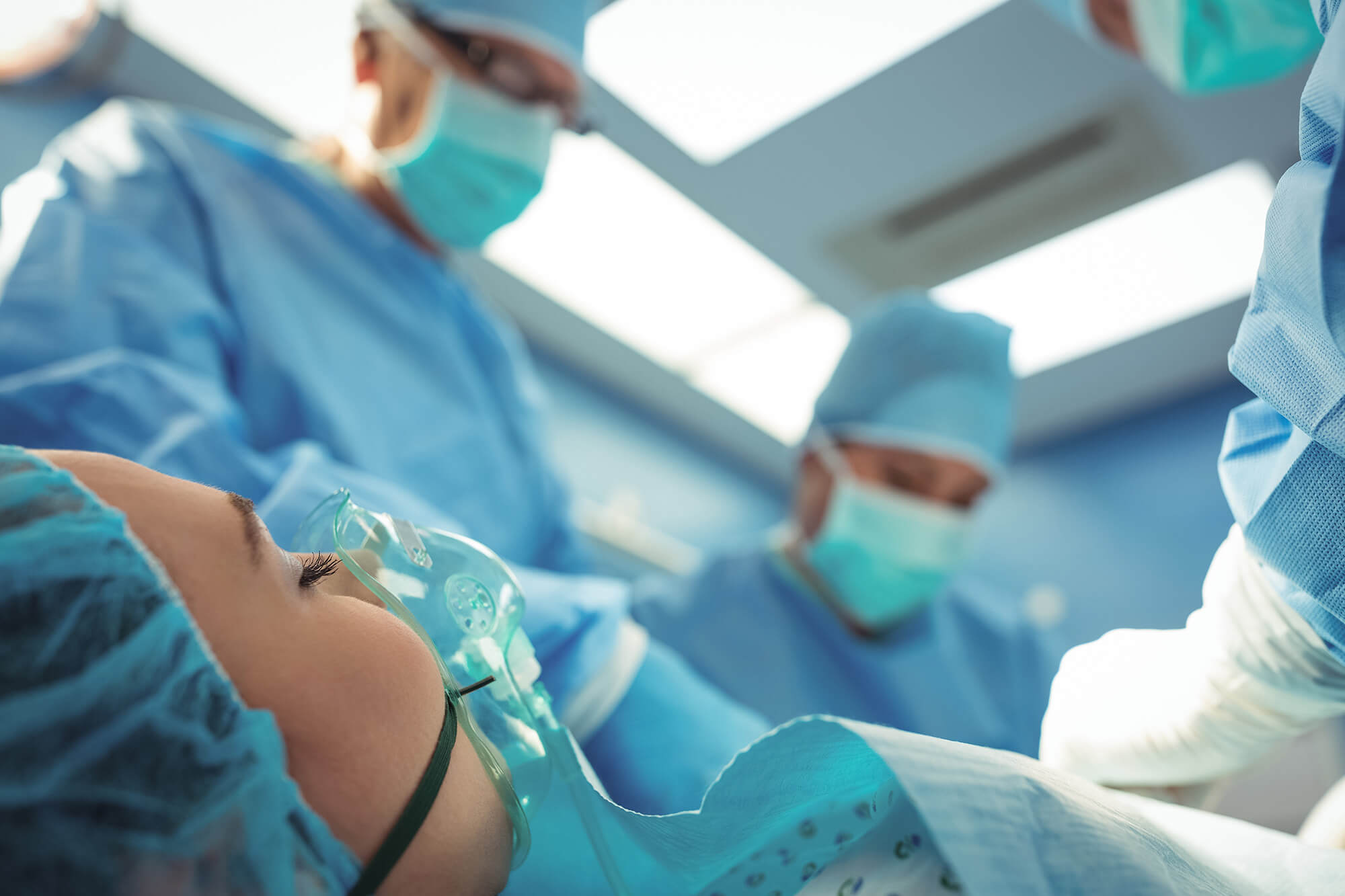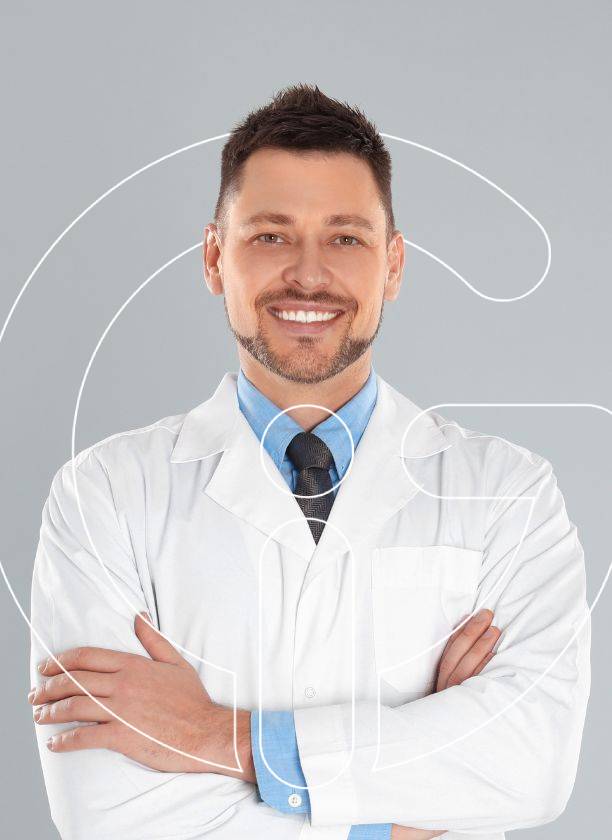What is an ERCP?
An endoscopic retrograde cholangiopancreatography (ERCP) is an endoscopic procedure where a long, thin, flexible tube or “scope” is placed into the mouth and advanced to the duodenum or first portion of the small intestine. The scope has a light and a camera on the end of it which allows the physician to examine the lining of the esophagus, stomach, small intestine, and opening to the bile duct and the pancreatic duct. An endoscopic retrograde cholangiopancreatography (ERCP) may be performed to diagnose the cause of gastrointestinal symptoms such as:
- abdominal pain
- pancreatitis
- abnormal liver test
- abnormal x-ray results
Contact a GI Alliance location in your community to schedule a visit with a GI specialist today to learn more about the ERCP procedure.

What are the benefits of an ERCP?
An ERCP may be necessary if blood tests show abnormal liver results, if you’re experiencing inflammation of the pancreas, or if you experience issues such as abdominal pain or yellowing of the skin and eyes. Benefits of this test include:
- Reduced recovery periods: Individuals commonly have expedited recovery periods with an ERCP compared to conventional approaches involving surgery, enabling a faster return to daily activities.
- Efficiency: The ability to identify and treat a health issue within one procedure commonly reduces the overall treatment time for patients.
- Diagnostic and therapeutic: An ERCP serves dual purposes, helping doctors identify diseases or conditions and provide treatment during the same process. This can reduce the need to undergo multiple interventions.
- Enhanced precision: This approach enables the precise visualization of and treatment within the pancreatic and biliary ducts, which is crucial for correct diagnosis and treatment.
What should I expect the day before my ERCP procedure?
You will receive instructions from your doctor at GI Alliance regarding the necessary preparation. Most patients will be allowed to eat normally the day before the exam. Patients will be instructed not to take anything by mouth after midnight except for medications. It is very important to follow the instructions given to you by your doctor. There will also be additional instructions regarding your medications. In most cases, your medications will be continued as usual. However, in certain circumstances, especially in patients on blood thinners, (i.e. Coumadin, warfarin, Plavix, aspirin, anti-inflammatories) and in diabetics, special instructions will be given.
What happens the day of the procedure?
You will be asked to arrive at the endoscopy center 1 – 1.5 hours before your exam. This is to allow time to fill out paperwork and prepare for the exam. You will be asked to change into a medical gown. An intravenous (IV) catheter will be started in your arm so that sedation can be administered. You will be connected to equipment that will allow the doctor and staff to monitor your heart rate, blood pressure, pulse, electrocardiogram, breathing, and oxygen levels during and after the exam.
Once in the exam room, you will be asked to lie on your abdomen on the stretcher. The IV sedation will be started. Small amounts are given at a time to assure that you do not have any reaction to the medication and to provide only the amount that you need individually. As opposed to other endoscopic procedures, it is not uncommon for general anesthesia to be performed for this exam. Once an adequate level of sedation is achieved, the endoscope will be gently inserted into the mouth. The scope will be carefully advanced through the esophagus, stomach, and small intestine to the position where the bile duct and pancreatic duct open into the small intestine. A small amount of air is injected through the scope into the gastrointestinal (GI) tract to help the physician see. In this exam, contrast is injected into the bile duct and the pancreatic duct. An x-ray machine is used to take pictures of the bile duct and pancreatic duct to see if there are any abnormalities. Any fluid remaining in the upper GI tract can be suctioned out through the scope. Depending on the findings of the exam, several things can be done at the time of the procedure including biopsies, sphincterotomy (cutting open the bile duct or pancreatic duct), removal of gallstones from the bile ducts or stones from the pancreatic ducts, or placement of stents (plastic/metal tubes) into the bile duct or pancreatic duct. At the end of the procedure, as much of the air and remaining fluid as possible is suctioned out through the scope. Depending on the findings, the exam takes approximately 30-90 minutes.
After the exam is complete, you will be taken to the recovery room to be monitored while the sedation starts to wear off. The amount of sedation used during the exam and your response to the medication will dictate how quickly you wake up, though most patients are awake enough for discharge within 45 – 60 minutes. You will not be allowed to drive for the rest of the day; therefore, you will need to arrange for a ride home. You will also be instructed not to work, sign important papers, or perform strenuous activities for the rest of the day. Most patients can eat and drink normally after discharge from the endoscopy unit, however, specific instructions regarding activity, eating, and medications will be given to the patient before discharge. Occasionally, patients will need to stay in the hospital overnight for monitoring.
When will I get the results of my ERCP?
After the exam, the doctor and/or nurse will go over the findings of the procedure with you. Most patients will not remember what they are told after the exam because of the effects of the sedation. It is recommended, if possible, to bring someone with you to whom the results can also be discussed. You will also go home with a typed report. Our GI Alliance team will inform you of any biopsy results usually within one week.
What are the risks of an ERCP?
In general, endoscopic retrograde cholangiopancreatography (ERCP) is a very safe procedure. Most complications are not life-threatening, however, if a complication occurs, it may require hospitalization and surgery. Prior to the exam, a consent form will be reviewed with the patient by the nursing staff. The risks will again be readdressed by the physician before the exam starts, and any questions or concerns can be discussed.
Acute pancreatitis, or inflammation of the pancreas, is the most common complication. This may occur in 5 – 8% of cases, though depending on the patient, the risk can be as high as 20%. Symptoms of pancreatitis include abdominal pain, nausea, vomiting, and possibly fever. Most cases are mild and require four or fewer days in the hospital. During the hospitalization, patients usually only require IV fluids, pain, and nausea control. Rarely, however, pancreatitis can be more serious and even life-threatening.
Medication reactions associated with the sedation can occur. These can include but are not limited to allergic reactions, difficulty breathing, effects on the heart and blood pressure, and irritation of the vein used to give the medication. Bleeding can occur with biopsies or a sphincterotomy. Again, significant bleeding which might require a blood transfusion or hospitalization is very uncommon.
Perforation or puncture of the esophagus, stomach, or small intestine can occur. This may be recognized at the time of the exam, or it may not be apparent until later in the day. In most cases, a perforation will require surgery and hospitalization. This is still a very uncommon complication, even when biopsies are taken or a sphincterotomy is performed.
Finally, for a variety of reasons, in 5 – 10% of cases, the exam may not be able to be completed. It is very important that the patient contact the doctor’s office immediately if symptoms arise after the procedure such as worsening abdominal pain, bleeding, or fever.
Like any other test, endoscopic retrograde cholangiopancreatography (ERCP) is not perfect. There is a small, accepted risk that abnormalities including cancers can be missed at the time of the exam. It is important to continue to follow up with your doctors as instructed and inform them of any new or persistent symptoms.
What are alternatives to an ERCP?
To an extent, the alternatives to the exam will depend on the reason for needing to undergo the endoscopic retrograde cholangiopancreatography (ERCP) in the first place. In most cases, endoscopic retrograde cholangiopancreatography (ERCP) is the best method to evaluate and treat abnormalities in the biliary and pancreatic systems. However, an x-ray called a magnetic resonance cholangiopancreatography, percutaneous transhepatic cholangiogram (PTC), or endoscopic ultrasound (EUS) can evaluate the biliary and pancreatic ducts as well. The MRCP is only a diagnostic exam. Treatment of abnormalities will require an endoscopic retrograde cholangiopancreatography (ERCP) or surgery. The PTC or EUS do have treatment options. The experienced gastroenterologists at GI Alliance can help determine the ideal approach for your health needs.

Experienced care for endoscopic procedures
ERCP FAQs
What questions might be helpful to ask my doctor about ERCP?
If you discover that you need an ERCP procedure, you’ll likely have several questions and might not know where to start. Questions to consider asking your GI physician might include:
- If a complication should arise, what symptoms or signs might I experience?
- What might my doctor expect to find during this procedure?
- What is the general success rate of an ERCP?
What should you avoid doing after having an ERCP?
You cannot operate a vehicle for 24 hours after your ERCP as the sedative medication might still be in your system. As a result, we ask that you have a friend or family member drive you home from your appointment. We may instruct you to hold off on eating for a period of time depending on the treatment performed during the course of your ERCP. We also recommend that you take the remainder of the day and possibly the following day off from work. Your GI Alliance team will provide information on what to anticipate during your procedure.
What types of procedures can be performed during an ERCP?
Some of the more common procedures conducted during an ERCP include:
- Biliary sphincterotomy
- Placement of pancreatic and biliary stents
- Stone removal (gallstones in the bile duct)
- Biopsies
How might you prepare for an ERCP procedure?
Our digestive health team can provide you with directions on how to prepare for your ERCP. However, some of the instructions you may be asked to follow include:
- Do not eat or drink for eight hours prior to your procedure. (Water may be fine to drink. Consult your doctor to confirm.)
- Do not smoke for eight hours prior to your procedure.
- Provide your GI physician with a list of all medications you take along with any allergies you may have.
